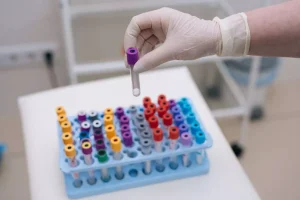
They can also reduce the amount of insulin your body produces, leading to the breakdown of fat cells and the production of ketones. After finishing his medical degree at the University of Auckland, he continued post-graduate training in New Zealand as well as Australia’s Northern Territory, Perth and Melbourne. Following resuscitation, our patient had plasma electrolyte levels corrected, nutritional supplementation provided and completed an alcohol detoxification regimen. Given the early recognition of AKA and concurrent management, our patient had a good outcome.
Alcoholic Ketoacidosis Clinical Presentation
Larger studies by Fulop and Hoberman5 and Wrenn et al6 (24 and 74 patients, respectively) clarified the underlying acid base disturbance. Although many patients had a significant ketosis with high plasma BOHB levels (5.2–14.2 mmol/l), severe acidaemia was uncommon. In the series from Fulop and Hoberman, seven patients were alkalaemic. In 1940, Dillon et al1 described a series of nine patients who had episodes of severe ketoacidosis in the absence of diabetes mellitus, all of whom had evidence of prolonged excessive alcohol consumption.
Ketone acidosis of nondiabetic adults
Magnesium and phosphate levels should be measured and repleted if the serum levels are found low. Alcoholic ketoacidosis (AKA) is a condition that presents with a significant metabolic acidosis in patients with a history of alcohol excess. The diagnosis is often delayed or missed, and this can have potentially fatal consequences.
Metabolic Complications
- This results in metabolic acidosis with elevated beta-hydroxybutyrate levels.
- We present a 64-year-old female who presented with generalized abdominal pain, nausea, vomiting and shortness of breath.
- Clinicians underestimate the degree of ketonemia if they rely solely on the results of laboratory testing.
- Patients with AKA usually present with abdominal pain and vomiting after abruptly stopping alcohol.
- This activity illustrates the evaluation and treatment of alcoholic ketoacidosis and explains the role of the interprofessional team in managing patients with this condition.
If the breath of a person with diabetes smells of acetone, this suggests that there are high levels of ketones in their blood. At Sabino Recovery, we understand the challenges you or a https://ecosoberhouse.com/ loved one might face when dealing with alcoholic ketoacidosis. Our expertise and experience in addiction treatment can provide the support needed to address this complex health issue.

Our goal is to provide comprehensive addiction treatment, support, and the guidance needed to overcome this condition and maintain long-term sobriety. Your journey to better health starts with understanding the treatment and management options available for alcoholic ketoacidosis. In this section, we will guide you through the process by discussing initial stabilization, nutritional support and thiamine, as well as long-term alcohol use management. A blood alcohol test might be performed to determine the presence and amount of alcohol in your blood.

If your doctor suspects that you’ve developed this condition, they may order additional tests to rule out other possible conditions. The clinical and biochemical features of AKA are summarised in boxes 1 and 2. The classical presentation is of an alcoholic patient with abdominal pain and intractable vomiting following a significant period of increased alcohol intake and starvation. There may be a history of previous episodes requiring brief admissions with labels of “query pancreatitis” or “alcoholic gastritis”.
Alcoholic ketoacidosis is a condition that can happen when you’ve had a lot of alcohol and haven’t had much to eat or have been vomiting. When this happens, it can cause ketones, which are acids, to build up in your blood. If not treated quickly, alcoholic ketoacidosis may be life-threatening. Your doctor and other medical professionals will watch you for symptoms of withdrawal.
- The patient should have blood glucose checked on the initial presentation.
- When your liver uses up its stored glucose and you aren’t eating anything to provide more, your blood sugar levels will drop.
- If you or someone else has symptoms of alcoholic ketoacidosis, seek emergency medical help.
- There are a variety of non-specific clinical manifestations that contribute to these diagnostic difficulties.
- DSMS is an individualized plan that provides opportunities for educational and motivational support for diabetes self-management.
- Ketones provide some energy to cells but also make the blood too acidic (ketoacidosis).
This test will provide information about your sugar levels to help determine whether you have diabetes. If a person is already malnourished due to alcoholism, they may develop alcoholic ketoacidosis. This can occur as soon as one day after a drinking binge, depending on nutritional status, overall health status, and the amount of alcoholic ketoacidosis smell alcohol consumed. The greatest threats to patients with alcoholic ketoacidosis are marked contraction in extracellular fluid volume (resulting in shock), hypokalaemia, hypoglycaemia, and acidosis. If you are diagnosed with alcoholic ketoacidosis, you’ll typically require hospitalization for close monitoring and specialized care.

We Accept Most Insurance Providers

Lastly, a comprehensive blood chemistry panel evaluates various aspects of your health, including electrolyte balance, and levels of hemoglobin and blood sugar, which can help to confirm the diagnosis of AKA. Some of the most prevalent neurological symptoms of alcoholic ketoacidosis are confusion and agitation. These symptoms may vary in intensity and could lead to decreased alertness or even coma in severe cases. If you are diagnosed with alcoholic ketoacidosis, your recovery will depend on a number of factors. Seeking help as soon as symptoms arise reduces your chances of serious complications. Treatment for alcohol addiction is also necessary to prevent a relapse of alcoholic ketoacidosis.
How to Prevent Alcoholic Ketoacidosis
After several days of fasting, protein catabolism starts, and muscles are broken down, releasing amino acids and lactate into the bloodstream, which can be converted into glucose by the liver. This biochemical process is responsible for the wasting and cachexia seen during starvation. People with liver disease have higher levels of certain chemical compounds, including acetone. The link between liver disease and fruity, musty breath is so strong that healthcare providers use breath smell as an indication of liver disease. If a person does not have enough insulin, their body is unable to convert blood sugar to glucose, which the body uses as fuel. Without glucose to burn, the body enters a severe form of ketosis, releasing enough ketones into the blood that the ketones begin poisoning the person.



